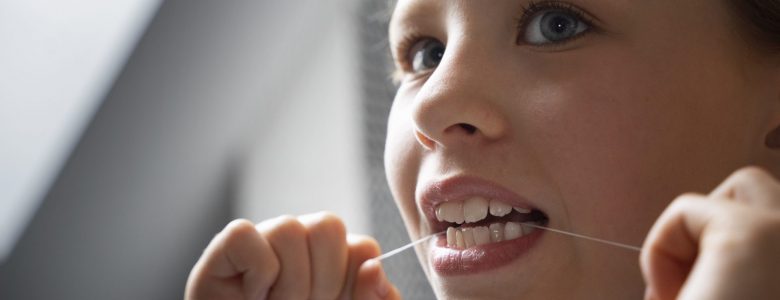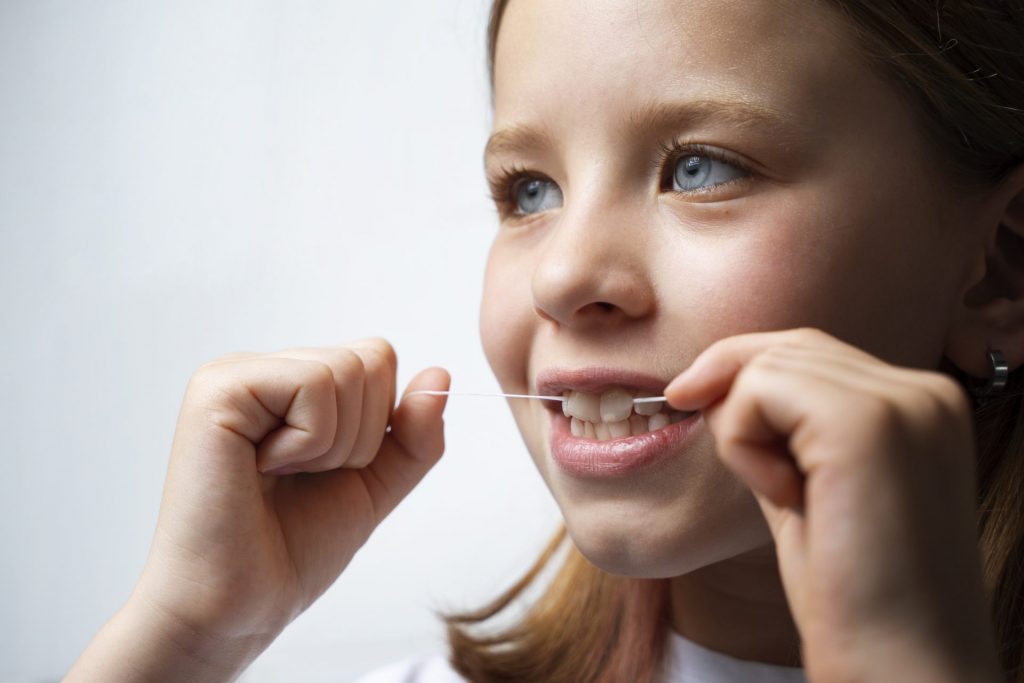
When Should Kids Start Flossing: A Guide for Parents
Oral hygiene plays a crucial role in maintaining good dental health for people of all ages, including children. While most parents understand the importance of brushing their children’s teeth, the topic of when to start flossing often remains unclear. Flossing is a vital practice that helps remove plaque and food particles from between the teeth, preventing tooth decay and gum disease. In this article, we will explore when children should start flossing, the benefits of early flossing, and provide some practical tips for parents to encourage proper flossing habits in their kids.
- The Right Time to Start Flossing
Many parents wonder when the appropriate time is to begin incorporating flossing into their child’s oral care routine. According to dental professionals, children should start flossing as soon as they have two teeth that touch. This typically occurs between the ages of two and six. Initially, parents should handle flossing for their children until they develop the necessary dexterity to do it themselves, usually around the age of eight.
- The Importance of Early Flossing
Introducing flossing early in a child’s life offers several advantages. First and foremost, it helps establish good oral hygiene habits from an early age. By incorporating flossing into their routine, children become accustomed to the practice, making it a natural part of their dental care regimen as they grow older.
Additionally, flossing aids in preventing cavities and gum disease. Toothbrushes can effectively clean the surfaces of the teeth, but they often cannot reach the tight spaces between them. Flossing removes plaque and food debris from these areas, preventing the development of dental issues that may arise later on.
Furthermore, teaching children to floss helps them understand the importance of thorough oral care and the significance of taking care of their teeth and gums. This knowledge can lead to a lifetime of good dental habits, reducing the likelihood of dental problems in the future.

- Tips for Encouraging Flossing
Introducing any new routine to children can be challenging, but with some practical tips, parents can make flossing an enjoyable experience. Consider the following suggestions:
a. Lead by example: Children are more likely to adopt positive habits when they observe their parents practicing them consistently. Make flossing a family affair and demonstrate proper technique and enthusiasm.
b. Use child-friendly products: Invest in child-sized flossing tools and colorful, flavored floss to make the experience more appealing to children. There are several options available specifically designed for kids, including floss picks and flossers with fun characters.
c. Make it fun: Turn flossing into a game or incorporate it into their bedtime routine. Playing their favorite music or using a timer can help make the process more engaging and enjoyable.
d. Supervise and assist: Initially, parents should assist their children in flossing to ensure they are doing it correctly. As children develop the necessary skills, gradually allow them to take more responsibility while keeping a close eye to ensure they maintain proper technique.
e. Offer praise and rewards: Positive reinforcement goes a long way in encouraging children to continue flossing. Praise their efforts, celebrate milestones, and consider small rewards to motivate them along the way.
- Choosing the Right Flossing Technique
When teaching your child to floss, it is important to emphasize the proper technique. Here’s a step-by-step guide:
a. Use an appropriate length of floss: Cut a piece of floss about 18 inches long. This allows for a fresh section of floss to be used between each tooth.
b. Guide the floss between the teeth: Show your child how to gently guide the floss between their teeth using a back-and-forth motion. Encourage them to be careful not to snap the floss, which could hurt their gums.
c. Form a “C” shape: Instruct your child to form a “C” shape with the floss around each tooth, sliding it up and down to remove any plaque or food particles. Remind them to be gentle to avoid injuring their gums.
d. Move to a clean section of floss: After cleaning between each tooth, demonstrate how to move to a clean section of floss by using a new area of the floss for each tooth.
- Regular Dental Check-ups
While flossing is an essential part of maintaining good oral health, it should not replace regular dental check-ups. Schedule regular visits to the dentist for professional cleanings and examinations. Dentists can provide additional guidance on flossing techniques, assess your child’s dental health, and address any concerns or issues that may arise.
- Overcoming Challenges
Some children may resist flossing or find it difficult due to sensitivity or braces. Here are a few tips to overcome these challenges:
a. Sensitivity: If your child complains of discomfort or sensitivity while flossing, try switching to a softer, gentler floss. Wax-coated or floss specifically designed for sensitive teeth and gums can be more comfortable for them.
b. Braces: Flossing can be more challenging for children with braces. Encourage them to use floss threaders or specialized orthodontic flossers to navigate around the brackets and wires. Your orthodontist can provide guidance on proper flossing techniques for braces.
c. Patience and Persistence: Some children may initially resist flossing or find it challenging. Be patient and persistent in encouraging them to develop this important habit. With time and practice, they will become more comfortable and proficient in flossing.
| Recommendations | Explanation |
| Start flossing when teeth touch | Begin flossing as soon as your child has two teeth that touch, typically between the ages of two and six. |
| Parental assistance for young children | Initially, parents should handle flossing for their children until they develop the necessary dexterity, usually around the age of eight. |
| Lead by example | Demonstrate proper flossing technique and enthusiasm by incorporating flossing into your own oral care routine. |
| Use child-friendly products | Invest in child-sized flossing tools and colorful, flavored floss to make the experience more appealing to children. |
| Make flossing fun | Turn flossing into a game or incorporate it into their bedtime routine. Use music or timers to make the process engaging and enjoyable for children. |
| Supervise and assist | Initially, assist your child in flossing to ensure they are doing it correctly. Gradually allow them to take more responsibility while keeping a close eye on their technique. |
| Offer praise and rewards | Use positive reinforcement to encourage children to continue flossing. Praise their efforts, celebrate milestones, and consider small rewards as motivation. |
| Regular dental check-ups | Schedule regular visits to the dentist for professional cleanings, examinations, and additional guidance on flossing techniques. |
| Overcoming challenges (sensitivity/braces) | Address sensitivity by using softer, gentler floss or specialized options for sensitive teeth and gums. For braces, utilize floss threaders or orthodontic flossers. |
Remember, these recommendations are intended to help parents establish good flossing habits in their children and ensure their long-term oral health.
Conclusion
Flossing is an essential component of good oral hygiene, and parents should introduce this practice to their children as soon as their teeth begin to touch. Early flossing not only helps prevent tooth decay and gum disease but also establishes a foundation for lifelong dental care habits. By following the tips provided and making flossing an enjoyable experience, parents can instill healthy oral hygiene practices in their children, ensuring they maintain bright smiles and healthy mouths well into adulthood. Remember, leading by example, choosing child-friendly products, and supervising their flossing routine are key to fostering good dental habits. Additionally, regular dental check-ups and overcoming challenges that may arise will contribute to your child’s overall oral health and well-being.
If you have any questions, comments, requests or suggestions, we invite you to contact us anytime at Petit Smiles in Coral Gables and Doral, FL.


